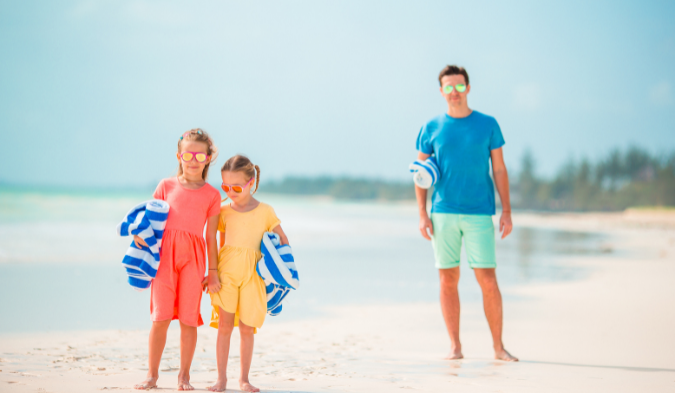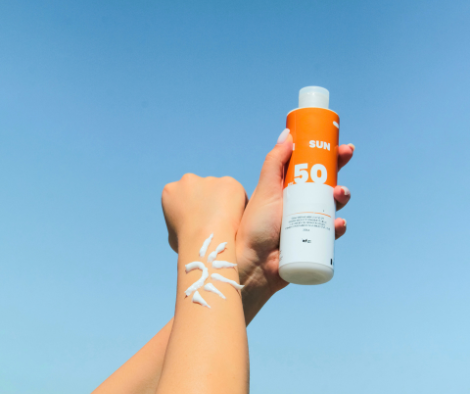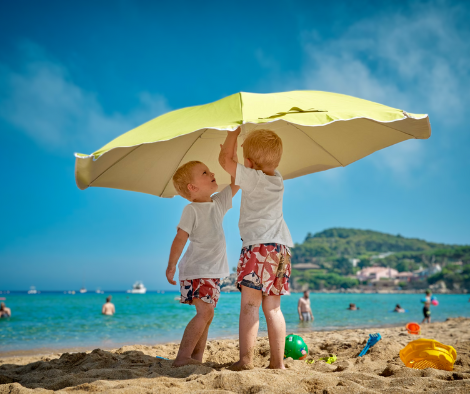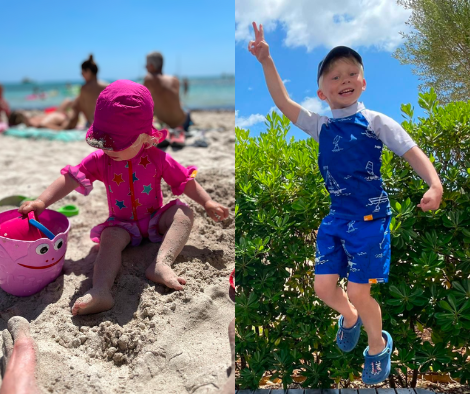
How can you best protect your child's skin on holiday?
Everyone, no matter their age, is at risk of skin damage due to overexposure to UV rays from the sun. For children, the risk is particularly high. Young skin is more sensitive and vulnerable to sunburn, and children are also at greater risk of long-term skin damage than adults when they sustain sunburn. To protect your child's health both now and in the future, it's vital that you protect their skin when you take holidays in hot and sunny destinations. Here are three ways to do so.

1. Dress them in UV-protective clothing
Clothing absorbs or blocks UV rays to stop them from reaching the skin, but not all fabrics are created equal. Some materials are simply too thin to adequately block or absorb UV, and in very strong sun it's possible to sustain sunburn through clothes. Ultraviolet Protection Factor (UPF) indicates how much UVA and UVB radiation a fabric allows to reach the skin. UPF 50 fabric stops 98% of UV rays from passing through it and is considered an excellent rate of protection. Look for densely woven fabrics in dark colours. Unbleached cotton and shiny synthetic fibres are particularly effective. Choose clothing that is UPF labelled for the utmost peace of mind.

TAKE A LOOK AT OUR KIDS COLLECTION
2. Apply broad spectrum sunscreen
Broad spectrum sunscreen protects against both UVB and UVA radiation. Your sunscreen should have a Sun Protection Factor (SPF) of at least 50, and UVA protection of at least 4 stars. SPF ratings range from 2 to 50+, while UVA ratings range from 1 to 5 stars. The higher the rating or stars, the more protection a sunscreen offers.
You should apply sunscreen to your child 30 minutes before they go outdoors and immediately before they go into the sun. Apply it to all areas of exposed skin, taking care not to miss the neck and tops of the ears. Reapply every two hours or immediately after swimming, even for sunscreens labelled as waterproof. Always apply sunscreen no matter how clear or cloudy the day is – it's easy to underestimate how much UV radiation can pass through clouds.

TAKE A LOOK AT OUR KIDS COLLECTION
3. Avoid midday sun
When the sun is at its highest point in the sky at midday, its rays take the most direct route to earth and very little UV is absorbed by the atmosphere. This is why we're more susceptible to sun damage when we're outdoors between 11 am and 3 pm. Try to avoid being in direct sunlight during these times by staying in the shade or indoors as much as possible. If your kids love playing in the pool or swimming in the sea, head out early in the morning and in late afternoon or evening. Find indoor activities, like visiting museums or galleries, during the hottest part of the day.

Take sun protection seriously!
Protecting your child against harmful UV rays is vital for preventing both acute sunburn and long-term health risks. By following the three tips above, you can keep your little ones safe while they have fun in the sun on holiday.